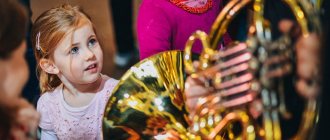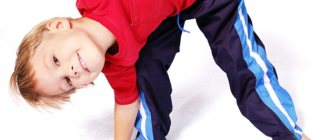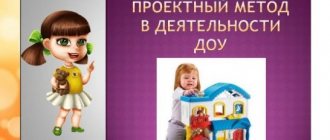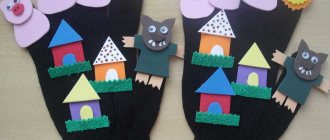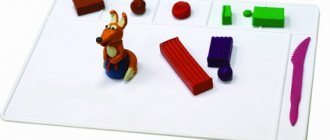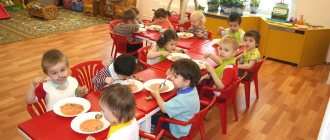Types of gymnastics for use in preschool educational institutions.
TYPES OF GYMNASTICS FOR USE IN PRESIDENTIALS,
In the system of physical education of a preschool child, various types of gymnastics are distinguished: general developmental (this includes basic gymnastics, hygienic, etc.), sports-oriented gymnastics, which includes elements available to children and aimed at increasing their general physical fitness (for it). include rhythmic gymnastics, athletic, etc.), applied, or therapeutic.
Basic gymnastics.
Basic gymnastics is aimed at improving health, general physical fitness, hardening the body, developing correct posture, strengthening internal organs and their systems (cardiovascular, respiratory, endocrine). The content of basic gymnastics includes drill (exercises in formation and restructuring), general developmental and basic movements. Physical exercises are performed on gymnastic apparatus and using physical education equipment. Under the influence of basic gymnastics, the activity of internal organs improves, metabolism increases, and the neuromuscular system is strengthened. Domestic scientists consider gymnastics an important factor in increasing performance and the best means of relaxation. Gymnastics allows you to select exercises that selectively affect the development of any muscle groups, joints, organs and their systems. Gymnastics classes contribute to the formation of skills of varying complexity and thereby place high demands on the nervous system and the functions of the analyzers. Gymnastics is characterized by a precise, measured load, determined by the nature of the exercises, the pace of their execution, the analysis and number of movements, and the characteristics of the starting positions. Gymnastic exercises can be: I a) dynamic (aimed at more complete use of all driving forces when performing physical exercises and at the same time reducing inhibitory forces); b) static (they are associated with the motionless preservation of any position of the body and its posture). Gymnastic exercises can be anaerobic or aerobic in nature (i.e., exercises performed with minimal or maximum oxygen consumption).
Hygienic gymnastics. Hygienic gymnastics is aimed at strengthening the child’s health, developing correct posture, and improving the functional systems of the body. The means of hygienic gymnastics are general developmental exercises in combination with hardening: water, air and solar procedures; massage and self-massage. Hygienic gymnastics is recommended for all age groups of children. Sports-oriented gymnastics aims to increase a person’s overall physical fitness. Only its elements can be used when working with preschool children. Rhythmic gymnastics includes exercises with a sports orientation. These can be exercises without or with objects, as well as exercises with non-supported jumps. A distinctive feature of rhythmic gymnastics is its connection with music and elements of dance, the emotional expressiveness of movements, their beauty and grace, which significantly contributes to aesthetic education. The teacher’s task is to make rhythmic gymnastics exercises accessible to children, and to make their movements harmonious, natural and graceful. The combination of movement and music, the dance nature of the exercises give them a vibrant dynamic structure. Rhythmic gymnastics is characterized by balance exercises, turns, dance types of walking, running, jumping, elements of folk dance, exercises with objects (ball, hoop, ribbons, jump ropes, clubs, flags, etc.). Rhythmic gymnastics exercises form coordination of movements. They are performed at different speeds and different muscle tensions. In rhythmic gymnastics, artistic movement is widely used - a system of physical exercises of a predominantly dance nature, characterized by rhythm, plasticity, expressiveness, and refinement of movements. They are organically connected with music and develop the ability to improvise. Artistic movement includes steps, turns, spins, and jumps; in this case, compositions are created that are combined with certain music. In preschool institutions, you can use the available elements of artistic movement when carrying out various forms of organizing motor activity. Acrobatics (from the Greek - “rising upward”) is one of the sports types of gymnastics. In preschool institutions, individual elements of acrobatics are used, mainly movements leading up to acrobatic exercises that prepare the child to perform exercises at school age. The teacher requires special attention when performing stretching exercises and somersaults. A number of researchers emphasize the need for teachers to take a careful approach to teaching a child to somersault (M. N. Ponyaev, O. Sytel, etc.). Many experts in the field of physical education of the child recommend, in order to protect the spine, especially its cervical sections, putting on the child a cervical collar (T. Doman, D. Doman, B. Khagi, etc.) or laying a soft rug (I. Borisova). At an early age, acrobatic movements are performed together with adults (mom, dad, teacher). Acrobatic types of exercises include exercises such as: “Dragonfly”, “Airplane”, “Swallow”, “Fish”, “Window”, etc. Rhythmic gymnastics is a system of physical exercises performed to music. Rhythmic gymnastics helps children develop muscle freedom, expressiveness, beauty, grace, and rhythmic movements. It develops musicality and forms a sense of rhythm. Rhythmic gymnastics in preschool institutions is included in various forms of motor activity: in morning exercises, in the introductory part of physical education classes, or as rhythmic blocks in their main part and other types of activities. Applied gymnastics. Applied gymnastics includes therapeutic gymnastics, or therapeutic physical education, aimed at restoring health. It is used to improve the condition of the nervous system, increase body tone, relieve negative emotions, improve physique, and correct posture.
One type of gymnastics is awakening gymnastics. It is aimed at the gradual transition of children from sleep to wakefulness. The teacher begins to conduct it with the awakened children, the rest join as they wake up. Gymnastics in bed can include elements such as stretching, alternately raising and lowering arms and legs, elements of self-massage, finger gymnastics, and eye gymnastics. The main rule is to avoid sudden movements. Which can cause muscle strain, overexcitation and, as a result, dizziness. The duration of gymnastics in bed is about 2-3 minutes. Then the children go into the cold room barefoot and in panties. There they perform walking (on toes, heels, with high knees, in a half-squat, in a full squat, on the outside of the foot, with a heel-to-toe roll, along corrective paths) or a set of exercises aimed at preventing flat feet. At the same time, it is important to monitor not only the correct execution of the exercises, but also the posture of the children. The duration of this part of the gymnastics is 2-3 minutes.
Finger gymnastics. Finger gymnastics is a fun, exciting activity! The famous teacher V.A. Sukhomlinsky said: “The child’s mind is at the tips of his fingers.” “The hand is the instrument of all instruments,” Aristotle said. “The hand is a kind of external brain,” Kant wrote. Jean-Jacques Rousseau, in his novel about education “Emile,” wrote about the needs of a small child: “... he wants to touch everything, take everything in his hands. Do not disturb him, this is an absolutely necessary matter for him. This is how he learns to distinguish between heat and cold, hardness and softness, heaviness, size and shape of objects. The child learns about the properties of the things around him by comparing what he sees with the sensations he receives from his hands...” Finger gymnastics develops the child’s brain, stimulates the development of speech, creativity, and imagination. Simple movements help to remove tension not only from the hands themselves, but also to relax the muscles of the whole body. They can improve the pronunciation of many sounds. In general, the better the fingers work, the better the child speaks. The child’s hands, as it were, prepare the ground for the subsequent development of speech. Finger games have been common among a variety of peoples for a long time. And from an early age, our children were taught to play “Ladushki”, “Magpie - Belobok”, “Horned Goat”. Today, experts are reviving old games and inventing new ones. We can talk about finger gymnastics as an excellent universal, didactic and developmental material. The method and meaning of this gymnastics is that the nerve endings of the hands affect the child’s brain and brain activity is activated. For school learning, it is very important that the child has well-developed fine motor skills. Finger gymnastics is a good helper for preparing your hand for writing and developing coordination. And in order for speech to develop at the same time, you can use small rhymes, counting rhymes, and songs for such games.
Corrective gymnastics Corrective gymnastics has recently begun to be used in preschool institutions as a form of rehabilitation for children aged 1.5 to 7 years with various pathological and pre-pathological conditions. The reasons that determined the introduction of corrective gymnastics in preschool institutions are varied: a sharp deterioration in the health of newborns and, as a consequence, preschool children; deterioration of the environmental situation, which caused a decrease in the child’s immunobiological response; parents' employment. Kindergartens have the necessary conditions for timely prevention and rehabilitation (daily routine, material and technical base, personnel). General objectives of corrective gymnastics: • To develop in children vital motor skills and abilities that help maintain correct posture, feet and correct the spine. • Promote harmonious, proportional development of the body, the formation of beautiful posture, grace. • Develop the child’s motor abilities, plasticity, endurance, awareness while maintaining correct posture. The main means of corrective gymnastics is physical exercise. There are many classifications of physical exercises based on anatomical characteristics, the degree of activity, the nature of motor actions, etc. In preschool practice, the most common are gymnastic exercises with and without objects and games. The therapeutic effect of physical exercise is explained by the important biological role of movements in a child’s life. It has a beneficial effect on body functions impaired by the disease, accelerates recovery processes, and reduces the adverse effects of forced hypokinesia. Physical exercises have a varied effect depending on their selection, methods of implementation and physical activity. Thus, it is possible to prevent postural disorders through a system of preventive and therapeutic measures in preschool educational institutions and at home.
“Gymnastics is a system of specially selected physical exercises, methodological techniques used to promote health, harmonious physical development and improve a person’s motor abilities, strength, agility, speed of movement, endurance, etc. The volume of exercises used allows you to influence the entire body as a whole and develop individual muscle groups and organs, adjust the load taking into account gender, age, level of physical fitness.” Gymnastic exercises are divided into drill exercises, general developmental exercises, applied exercises, floor exercises, apparatus exercises, jumping exercises, rhythmic gymnastics exercises, and acrobatic exercises. Formation exercises (various formations, formations, opening and closing) are used to teach walking, running, developing correct posture, organizing students and their collective actions. General developmental exercises contribute to general physical development and prepare the student for more complex motor actions. Applied exercises (walking and running, throwing, climbing, balance exercises, overcoming obstacles, crawling, lifting and carrying loads, etc.) form the necessary skills. Floor exercises develop and improve the coordination abilities of those involved. Exercises on gymnastic apparatus (pommel horse, rings, parallel bars, crossbar) develop strength, agility and high coordination of movements. Support and simple jumps train the respiratory organs, blood circulation, develop and strengthen leg muscles, etc. In Russia, basic gymnastics (including hygienic and athletic), applied types of gymnastics (industrial gymnastics, professional-applied, sports-applied, etc.), sports gymnastics, rhythmic gymnastics, etc.
GYMNASTICS FOR THE EYES In the modern pace of life, it is extremely important to remain a healthy person in all respects. How often do we not realize the importance of what we have. We breathe air and don’t think about what if it suddenly disappears. Not the least of the necessary “characteristics” of health is normal vision. Looking at the world and seeing its beauty is great happiness. And this happiness is given to a person by the eyes. But it is through our eyes that we receive 70% of information: we see nature, navigate the labyrinths of cities, and travel by transport. The eye is very similar to a camera, where the role of springs is played by muscles: if the springs are weakened, the vision becomes weaker. Therefore, the eye muscles, like any other muscles, need gymnastics, which both trains and relieves tension. To maintain a decent level of vision in our kindergarten we use: compliance with the light regime, correct seating during classes, special gymnastics for the eyes “Fun Week” - All week in order, the eyes do exercises. - On Monday, when they wake up, their eyes will smile at the sun, they will look down at the grass and back to the heights. Raise your eyes up; lower them down, head motionless; (relieves eye strain). - On Tuesday, the eyes watch, They look here and there, They walk to the left, they walk to the right They will never get tired. Turn your eyes to the right side and then to the left, head motionless; (relieves eye strain). - On Wednesday we play blind man's buff, close our eyes tightly. One, two, three, four, five, Let's open our eyes. We close our eyes and open it. So we continue the game. Close your eyes tightly, count to five and open your eyes wide; (an exercise to relieve eye strain). - On Thursdays we look into the distance, We don’t feel sorry for this time, What’s near and what’s in the distance Our eyes must see. Look straight ahead, place your finger at a distance of 25-30 cm from your eyes, turn your gaze to the tip of your finger and look at it, lower your hand. (Strengthens the eye muscles and improves their coordination). - On Friday we didn’t yawn. Our eyes ran around in circles. Stop, and again run in the other direction. Raise your eyes up, right, down, left and up; and back: left, down, right and up again; (improves complex eye movements). - Even if Saturday is a day off, we are not lazy with you. We look for corners, so that the pupils run. Look at the upper right corner, then the lower left; move your gaze to the upper left corner and lower right (improves complex eye movements). - We'll sleep on Sunday, and then we'll go for a walk. To harden your eyes, you need to breathe air. Close your eyelids, massage them using circular movements of your fingers: the upper eyelid from the nose to the outer edge of the eyes, the lower eyelid from the outer edge to the nose, then vice versa (relaxes the muscles and improves blood circulation). - Without gymnastics, friends, Our eyes cannot live!
The role of outdoor games in the physical education and development of preschool children.doc[/attachment]The role of outdoor games in the physical education and development of preschool children. Games and entertainment are indispensable companions for children in the family and in preschool institutions. Preschool children play a wide variety of games: active, didactic, creative - role-playing, construction, dramatization games, musical, etc. Games, entertainment, and physical exercises help educators organize the motor activity of children during walks and physical education classes. In play, children experience more deeply and aesthetically perceive the beauty of their native land, become familiar with the working atmosphere and the rhythm of life around them. During games in the open air, in natural conditions, children develop the ability to use acquired skills in a variety of life situations. They develop agility, speed, they become strong and resilient, they learn to act boldly, showing activity, perseverance, initiative and independence. They develop feelings of friendship and camaraderie, mutual assistance and honesty. The decisive role in the management of games belongs to the teacher, but at the same time it is important to encourage children to be independent and show creative initiative when organizing and conducting games. We must strive to ensure that older preschoolers learn to play outdoor games on their own, following the basic rules of the game, maintaining discipline, and bringing the game to the end. Through familiarization with the rules of the game, the child gains the experience he needs to develop self-regulation. Thanks to a new approach to performing physical exercises from an early age, children develop a love for physical education in their minds. By playing and enjoying movement, preschoolers acquire the habit of a healthy lifestyle. Free physical activity allows the child to experience the joy of physical exercise, transforms it from purely mechanical to rehabilitation and therapeutic, relieves him from feelings of anxiety, constriction, fear, and influences his own state and behavior.
Articulation gymnastics for preschoolers. We are sure that physical education for preschoolers is absolutely necessary. And we do gymnastics for the arms and legs with the kids, but for some reason we forget to do the “tongue gymnastics.” Articulatory gymnastics is needed not only to overcome speech disorders, it is simply necessary for prevention. After all, the tongue is the main muscle of the speech organs (and all muscles need training). If articulatory gymnastics classes are carried out regularly, then errors in sound pronunciation can disappear on their own without the specialized help of a speech therapist. The proposed exercises should be performed daily in front of the mirror for 5-7 minutes. To make it more interesting for your child, do the exercises with him and show him pictures or toys for clarity. A set of exercises. 1. SMILE. Goal: to teach the child to hold his lips in a smile for a count of up to 10 times, exposing the upper and lower teeth. Execution: smile, show your teeth and hold your lips in a smile, counting from 5 to 10 times. 2. TUBE. Goal: to develop forward lip movement. Execution: extend closed lips forward, hold for a count of up to 10 times. 3. SPATULA. Goal: to develop the ability to hold the tongue in a calm, relaxed state. Execution: smile, open your mouth slightly, put your wide tongue on your lower lip. Hold your tongue in this position for a count of 5 to 10 times. The side edges should touch the corners of the mouth, do not stretch the lips too much into a smile so that there is no tension. 4. NEEDLE. Goal: to develop the ability to make the language narrow. Execution: smile, open your mouth wide, push your tongue forward, tense it, make it narrow. Hold the pose for a count of up to 10 times. The tongue should not be pinched between the lips, teeth, or lowered to the chin. 5. WATCH. Goal: to develop the ability to direct the tongue to the corners of the mouth. Execution: smile, open your mouth slightly, place the tip of your tongue behind your lower teeth and do not tear it away from your teeth, hold the pose for a count of up to 10 times. 6. SWING. Goal: to develop the ability to alternate the position of the tongue up and down. Execution: smile, open your mouth slightly, stick out your tongue, lift it up behind the upper teeth, then lower it down behind the lower teeth. Alternate the position of the tongue movement for a count of 10-15 times. 7.Accordion. Purpose: strengthen the muscles of the tongue, stretch the hypoglossal ligament. Execution: smile, open your mouth, suck your tongue to the roof of your mouth, and, without lowering your tongue, close and open your mouth. Hold the pose for a count of 10-15 times.
Working at a preschool educational institution, I use gymnastics in my practice in the form of finger games. “Finger games” are the staging of any rhymed stories or fairy tales using the fingers. During “finger games,” the child, repeating the movements of adults, achieves good development of fine motor skills of the hands, which not only has a beneficial effect on the development of speech, but also prepares the child for drawing and writing. I bring to your attention several options for finger games. Ivan Bolshak - to chop wood. Vaska-Ukazka - carry water. Medium Bear needs to light the stove. Grishka the Orphan needs to cook porridge. For little Timoshka to sing songs, to sing and dance songs. - Use your right hand to massage each finger of your left hand, then vice versa. Four brothers are tall and thin, They stick together, and the fifth one is on the sidelines. But as soon as they have to get down to work, the four call for the fifth brother. — The palm is positioned vertically, the index, middle, ring and little fingers are pressed against each other, the thumb faces to the side. On the last line, the four fingers put together begin to bend (call to you).
In my work I use various types of gymnastics. Finger gymnastics is carried out from a young age with a subgroup daily. Recommended for all children, especially those with speech problems. Conducted at any convenient time. Gymnastics for the eyes - at any free time, depending on the intensity of visual stress, from a young age. It is recommended to use visual material and demonstration by the teacher. Breathing gymnastics - in various forms of physical education and health work. It is necessary to ventilate the room before carrying out the procedure, and know the instructions on mandatory hygiene of the nasal cavity before the procedure. Waking up gymnastics - 5-10 minutes every day after a nap. The form of implementation is different: exercises on beds, extensive washing; walking along ribbed paths. Corrective gymnastics - in various forms of physical education and health work. The form depends on the task and the number of children.
The best gymnastics schools in Moscow
The list below will include Moscow schools that work with young champions and children who need sports for their health. To make a choice, parents should decide whether the child will shine on the pedestal or simply develop physically.
Vera Shimanskaya School
A private sports center where classes are conducted according to the original methodology of Olympic champion Vera Shimanskaya. The club is distinguished by its high-profile achievements and the names of its students. Pedestals of Europe and the World - the students of this sports school stand on them. If your goal is to raise a champion, this school is an excellent choice.
"GymStar Capital"
There are branches of the sports school in the capital of Russia, Rostov-on-Don, Baku and Rome. Here, the first competitions await young athletes after 3-6 months of training, and will not end until graduation. Students take prizes in Russian championships and international competitions.
"PRO-Gymnastics"
This is a strong sports school, which is the golden mean for those who choose between health and professional sports. The teaching staff consists only of practicing star athletes, giving intensive training, but at the same time does not divide children into the best and worst, giving all children a chance to become an outstanding athlete.
GymBalance
The school pays attention to the physical development of children, and does not raise children to be champions. Boys and girls are accepted here; the children are trained not by athletes, but by instructors. The set of exercises is aimed at the overall physical development of each child. There are no intense or difficult workouts, everything is easy, accessible, and in a playful way.
Olympic Reserve School of Gymnastics
Among schools for studying acrobatics and artistic gymnastics, the best is a state budgetary institution of federal significance. Highly qualified trainers work with children here. At the same time, the best are selected for competitions, and for those whose physical characteristics are not promising and outstanding, there are separate gentle training sessions for comprehensive development. In other cities of Russia, things are the same with schools for acrobatics and artistic gymnastics for boys.
useful links
The role of different types of gymnastics in
health protection of preschool children
Consultation for parents
One of the main tasks of the kindergarten is to protect and strengthen the physical and mental health of children and their physical development. This area includes not only teaching children basic movements and developing physical qualities, but also teaching children basic norms and rules of a healthy lifestyle. Solving this problem requires the interaction of educators and parents in different types of activities.
When working with children, such forms of physical development and health improvement of children in preschool educational institutions are used, such as physical education classes, physical education minutes, walks, outdoor games and various types of gymnastics.
What is gymnastics? Gymnastics is a method of physical development that helps strengthen the child’s body.
In our preschool institution we conduct different types of gymnastics with children.
1. Morning exercises
Morning exercises are carried out with children every day. Its duration is usually 5-8 minutes. As a rule, the same gymnastics complex is repeated for 2 weeks.
The main goal of morning exercises is to wake up the child’s body from sleep, increase the child’s mental and physical performance, improve his mood and prepare the body for the stress of the coming day.
There are several forms of morning exercises:
- traditional form using general developmental exercises with or without objects;
— plot gymnastics, in which exercises are connected by one plot;
— play gymnastics, consisting of 3-4 outdoor games;
- rhythmic gymnastics using dance movements and musical accompaniment.
2. Articulation gymnastics
Movement is necessary not only for the child’s body. Good mobility of the organs of articulation is needed, which helps to correctly pronounce various sounds. In kindergarten, articulation gymnastics is performed daily.
Performing articulation exercises is useful at any age, since clear articulation is the basis of good diction.
When performing articulatory gymnastics, you just need to remember that the movements must be clear, consist of several repetitions and be performed systematically, otherwise the new skill will not be consolidated.
The most mobile speech organ is the tongue. Therefore, in kindergarten, when conducting articulation gymnastics, along with other techniques, the “Fairy Tales of the Merry Tongue” technique is used.
3. Breathing exercises
During physical education classes, speech development classes, during morning exercises, and in free time from classes, breathing exercises are performed with children in order to:
— teaching children proper breathing, including speech breathing;
— prevention of upper respiratory tract diseases;
- saturating the brain with oxygen and improving performance;
- restoring breathing after physical activity.
Breathing exercises are a very simple and at the same time effective method that does not require special expenses. The only thing to remember is that breathing exercises are carried out in a well-ventilated area.
Breathing exercises for preschoolers are most often performed with poetic accompaniment.
At home, you can carry out both play exercises for younger children and use various objects for older children (cocktail tubes through which you can blow air, or lumps of cotton wool that need to be blown away).
4. Finger gymnastics
Another type of gymnastics performed in kindergarten is finger gymnastics, which helps develop and improve fine motor skills, speech development, preparing the hand for writing, and increasing the performance of the cerebral cortex.
Researchers from different countries have found that the level of development of children's speech is directly dependent on the degree of formation of fine movements of the fingers. The following pattern was identified: if the development of finger movements corresponds to age, then speech development is within normal limits.
Systematic finger training exercises are a means of stimulating the activity of the cerebral cortex, which in turn promotes the development of thinking and sound pronunciation.
Work on the development of movements of the fingers and hands should begin from a very early age and be carried out throughout preschool childhood.
Types of finger games:
- Folk nursery rhymes: “The White-sided Magpie”, “Ladushki-Ladushki”, “This Finger” for young children;
- Games with speech accompaniment (poems);
- Games with small objects (putting small objects into containers with your fingers, stringing beads on a cord, various fasteners, lacing, etc.);
- Games with kinetic sand;
- Finger Theater.
At first, children have difficulty performing many exercises. Therefore, exercises are practiced gradually and are first performed by children passively, with the help of adults, and then independently. Children generally enjoy playing finger games.
5. Gymnastics for the eyes
The strain on the eyes of a modern child is enormous. This includes a TV, a computer, a cell phone, and other entertaining technical toys, without which a modern little person cannot imagine his life. And the child’s eyes rest only during sleep.
Therefore, eye gymnastics is useful for children of any age in order to prevent visual impairment. In addition, by doing eye exercises with your child, you can relieve visual fatigue.
There are several methods for performing visual gymnastics. At home you can perform such simple methods with your child as:
- Verbal instructions. This is a set of exercises based on simple rhymes that contain instructions for action. In this playful form, the baby will be happy to perform exercises.
- A visual simulator is a bright, large object that an adult moves in space, and the child follows these movements with his eyes alone. This method is used for older children.
6. Psycho-gymnastics
The modern world is filled with stress. And children are most susceptible to stress. Currently, the load on children is constantly increasing, and the amount of rest and emotional and motor relaxation is decreasing. Therefore, children are increasingly experiencing fatigue, short temper, irritability, and aggressiveness. This is where psycho-gymnastics comes to the rescue.
Psycho-gymnastics is special classes aimed at reducing emotional stress, correcting the mood and behavior of children.
These activities are especially needed for children who are excessively tired, restless, or have a quick-tempered or withdrawn character. But it is no less important to perform these sets of exercises with healthy children as a form of psychophysical relaxation and prevention.
Psycho-gymnastics is primarily aimed at teaching elements of the technique of expressive movements and acquiring skills in self-relaxation.
In preschool age, the following psychogymnastics exercises are used:
- Games with a change in the nature of movements (for example, the low-mobility game “Owl”);
- Exercises to develop the ability to alternate muscle tension and relaxation (for example, “Sun and Cloud”);
The sun has gone behind the cloud,
It became chilly and dark. (We cringe, hugging ourselves by the shoulders.)
The sun came out from behind a cloud,
We will now relax our arms. (Straighten your shoulders, relax)
- Sketches for imitation of emotional states (for example, after reading the fairy tale “Masha and the Bear,” an adult asks the child to portray an angry bear, to show how scared Mashenka was when she saw him, how happy her grandparents were about Mashenka’s return),
- Relaxation exercises (for example, “Sleeping Kitten”: the child plays the role of a kitten that lies down on the mat and falls asleep)
7. Invigorating gymnastics, or awakening gymnastics after a nap.
This is a set of activities that facilitate the transition of children from sleep to wakefulness. Invigorating gymnastics helps the child’s body wake up, improves mood, and improves muscle tone.
The complex of invigorating gymnastics includes breathing exercises, simple self-massage and exercises for the prevention of postural disorders and flat feet.
It is carried out on beds and combined with hardening procedures (air baths). Ends with walking barefoot on the floor or massage paths.
In kindergarten, invigorating gymnastics is performed daily for 5-7 minutes. The teacher begins to conduct it with the awakened children, the rest join as they wake up.
Working to protect and strengthen the health of our children with the help of various health-saving technologies is the common concern of all adults - teachers and parents.

